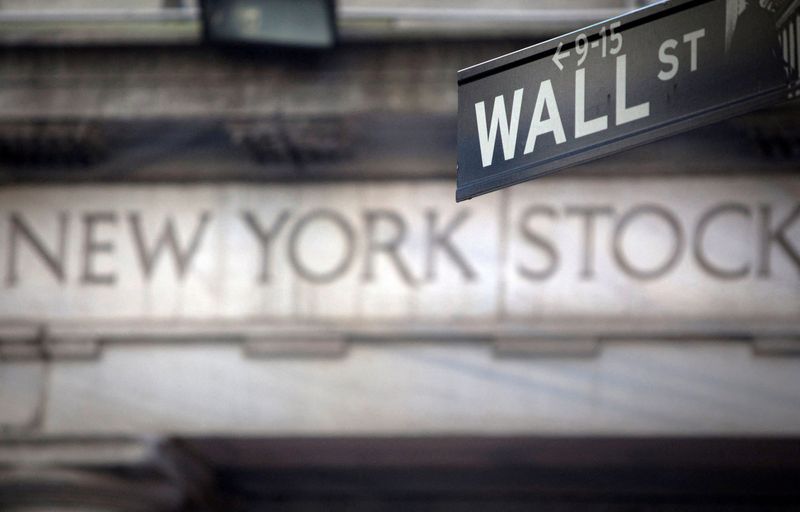By Saqib Iqbal Ahmed
WASHINGTON (Reuters) - Investors may be underestimating the degree of potential market turbulence stemming from the Federal Reserve's economic symposium at Jackson Hole, Wyoming, potentially leaving them more vulnerable to a hawkish surprise, options strategists said.
Pricing in the options market - where investors often hedge against stock swings - shows expectations of a 0.9% move in the S&P 500 Index between now and the end of trading Friday, the day Fed Chair Jerome Powell is expected to give his address on monetary policy at 10:05 a.m. ET (1405 GMT).
Some strategists believe that outlook may not be cautious enough, especially if last year is any guide.
A more hawkish-than-expected message from Powell at Jackson Hole last August sank the S&P 500 by 3.4% on the day of his address - the biggest reaction to a Fed chair’s speech at the annual symposium in at least 11 years, a Reuters analysis showed. At that time, options markets were primed for a move of around 1.4%.
With many investors sitting on big year-to-date gains in stocks and bond yields pushing higher, investors may be caught flat-footed if a hawkish Powell spurs a run out of risky assets, Steve Sosnick, chief strategist at Interactive Brokers (NASDAQ:IBKR), said
Markets "have shaken off some of the outright complacency that existed about a month or two ago but (they) are hardly risk averse," Sosnick said.
Analysts at Bank of America (NYSE:BAC) also believe markets may be ill prepared for a hawkish message from Powell, writing earlier this week that recent strength in U.S. economic data would probably increase policymakers’ concerns about a reacceleration in inflation.
"Fading expectations of recession have brought the focus back to inflation and a potential tight Fed … and risk assets have started showing more signs of weakness than at any other point this year," they said. "We therefore think equities are more at risk of a macro-driven shock than the market is pricing in."
Barring the market drop last year and a 2019 tumble, Fed chairs' Jackson Hole speeches have not been big market movers in recent years, with the S&P 500 logging an average swing of 0.9% on the day of the address over the last decade.
Still, there may be greater scope for market gyrations this time around, analysts said. The S&P 500 has gained more than 15% year-to-date but the rally has stumbled this month as soaring yields on Treasuries threaten to dull the allure of stocks.
Though the Fed has made significant progress in cooling consumer prices, the pressure may be on Powell to reinforce his "higher for longer" mantra on rates to avoid giving the impression that the battle against inflation was already won, BofA's analysts wrote.
This year's symposium also comes at a time when various asset classes have become more vulnerable to outsized moves following the Jackson Hole event, according to an analysis by derivatives strategists at Barclays (LON:BARC).
Across asset classes, the average volatility-adjusted move around Jackson Hole has almost doubled in the 2017-2022 period, compared with 2010-2016, the bank's strategists wrote in a note on Tuesday.
To be sure, there's little guarantee that Powell's message will be a starkly hawkish one. Treasury yields soaring to their highest levels in more than a decade suggests the Fed’s "higher for longer" message may be getting through to some investors.

At the same time, there are signs that investors may not be totally unprepared for fireworks. The Cboe Volatility Index, which measures demand for protection from market swings, stands at 16.15, well off the recent low of 12.74 touched in late July.
"I think if anything this event has been hyped up and Powell will have much less of an ax to grind compared to last year," said Chris Murphy, Susquehanna Financial Group co-head of derivative strategy.